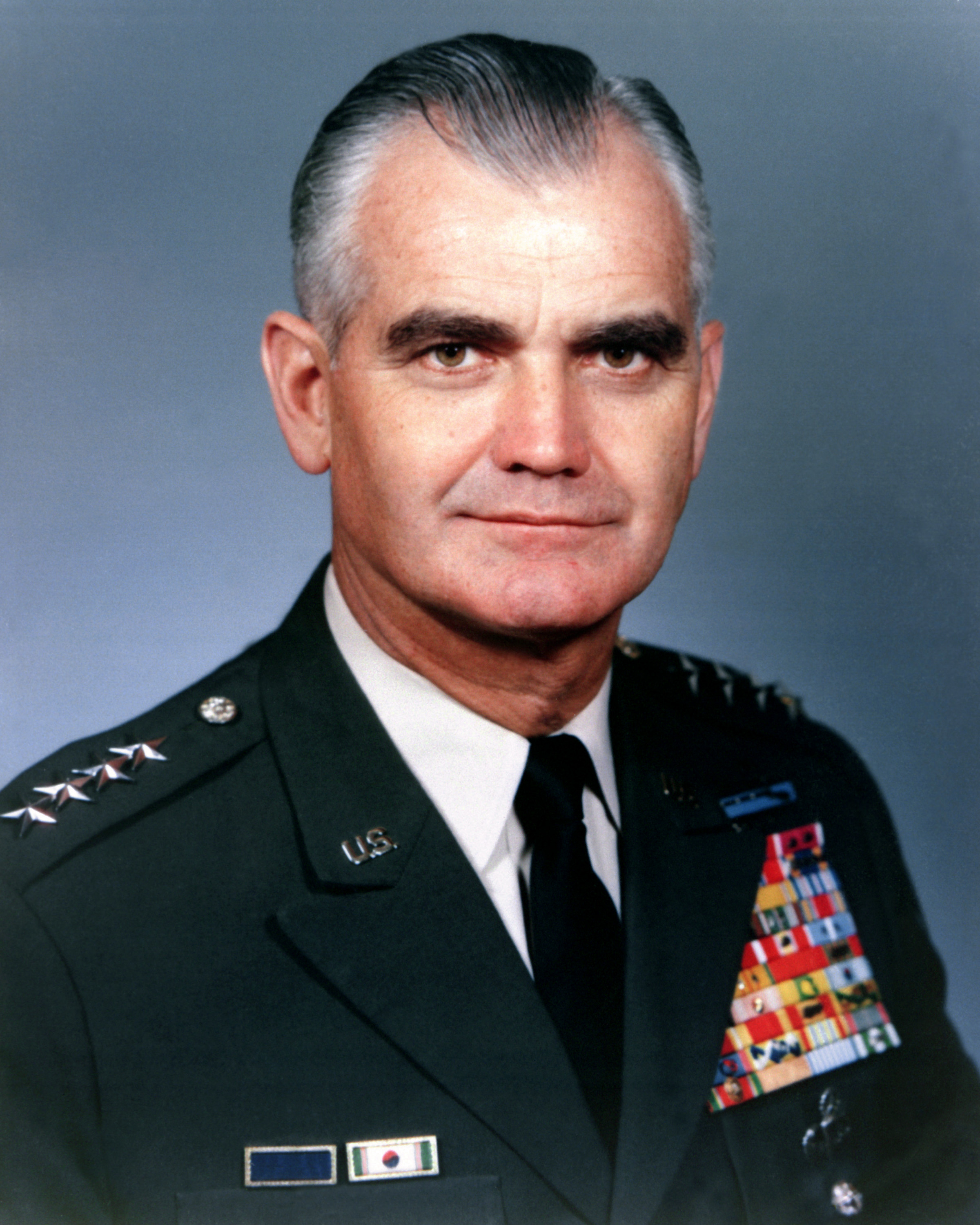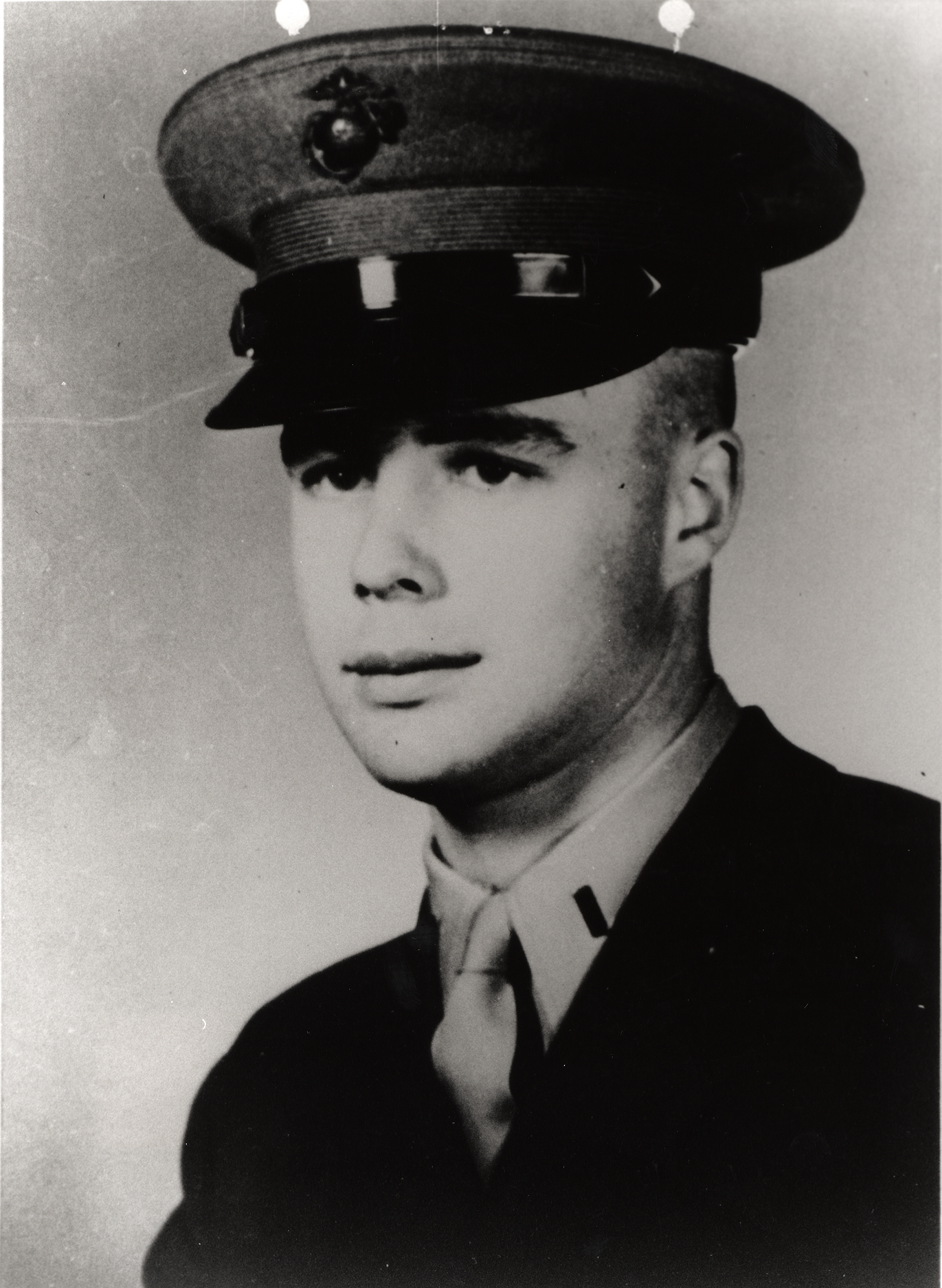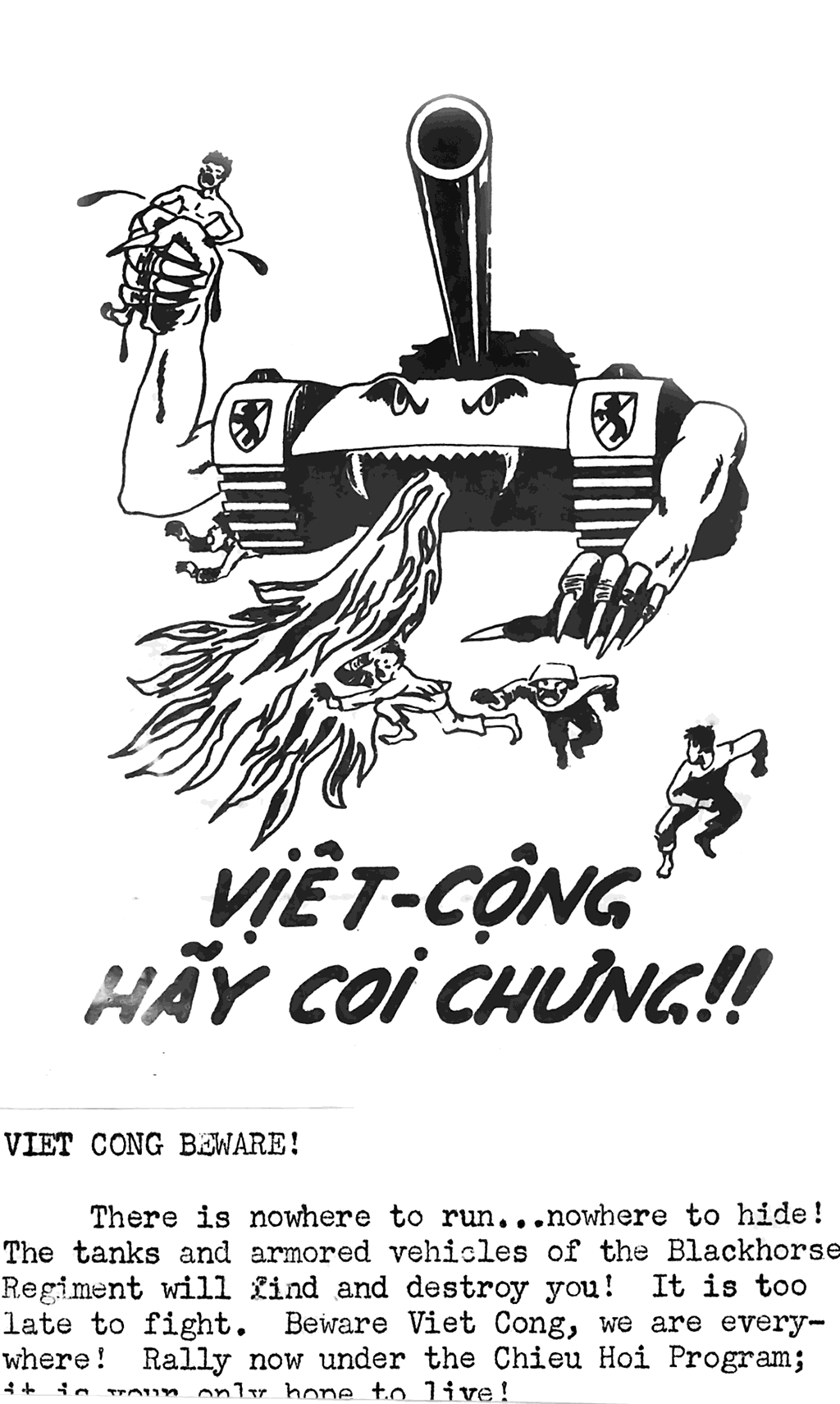|
May Offensive
Phase Two of the Tet Offensive of 1968 (also known as the May Offensive, Little Tet, and Mini-Tet) was launched by the People's Army of Vietnam (PAVN) and Viet Cong (VC) against targets throughout South Vietnam, including Saigon from 29 April to 30 May 1968. The May Offensive was considered much bloodier than the initial phase of the Tet Offensive. U.S. casualties across South Vietnam were 2,169 killed for the entire month of May, making it the deadliest month of the entire Vietnam War for U.S. forces, while South Vietnamese losses were 2,054 killed. PAVN/VC losses exceeded 24,000 killed and over 2,000 captured. The May Offensive was a costly defeat for the PAVN/VC. Background In late March 1968 COSVN and B2 Front leaders held meetings to review the results of the Tet Offensive. Lê Duẩn, the driving force behind the Tet Offensive, and General Hoàng Văn Thái wished to renew the offensive before the start of the southern monsoon began in mid-May in order to improve their po ... [...More Info...] [...Related Items...] OR: [Wikipedia] [Google] [Baidu] |
Tet Offensive
The Tet Offensive was a major escalation and one of the largest military campaigns of the Vietnam War. It was launched on January 30, 1968 by forces of the Viet Cong (VC) and North Vietnamese People's Army of Vietnam (PAVN) against the forces of the South Vietnamese Army of the Republic of Vietnam (ARVN), the United States Armed Forces and their allies. It was a campaign of surprise attacks against military and civilian command and control centers throughout South Vietnam. The name is the truncated version of the Lunar New Year festival name in Vietnamese, Tết Nguyên Đán, with the offense chosen during a holiday period as most ARVN personnel were on leave. The purpose of the wide-scale offensive by the Hanoi Politburo was to trigger political instability, in a belief that mass armed assault on urban centers would trigger defections and rebellions. The offensive was launched prematurely in the late night hours of 30 January in the I and II Corps Tactical Zones of S ... [...More Info...] [...Related Items...] OR: [Wikipedia] [Google] [Baidu] |
Politburo Of The Communist Party Of Vietnam
The Political Bureau (Politburo) of the Central Committee of the Communist Party of Vietnam ( vi, Bộ Chính trị Ban Chấp hành Trung ương Đảng Cộng sản Việt Nam), formerly the Standing Committee of the Central Committee from 1930 to 1951, is the highest body of the Communist Party of Vietnam (CPV) between Central Committee meetings, which are held at least twice a year. According to Party rules, the Politburo directs the general orientation of the government and enacts policies which have been approved by either the National Party Congress or the Central Committee. The members of the Politburo are elected and given a ranking by the Central Committee in the immediate aftermath of a National Party Congress. The current Politburo (13th) was elected by the Central Committee in the aftermath of the 13th National Congress and consists of 18 members. The first-ranked member is General Secretary of the Central Committee. Duties and responsibilities The Politburo is a ... [...More Info...] [...Related Items...] OR: [Wikipedia] [Google] [Baidu] |
3rd Battalion 9th Marines
The 3rd Battalion, 9th Marines (3/9) is an infantry battalion of the United States Marine Corps. Formed during World War I it served until the early 1990s when it was redesignated as 3rd Battalion, 4th Marines (3/4) during a realignment and renumbering of the Marine Corps' infantry battalions, following the deactivation of the 9th Marine Regiment. The 3rd Battalion, 9th Marines was initially a subordinate unit of the 9th Marine Regiment, 3rd Marine Division, but was later operationally transferred to the 1st Marine Division as a subordinate unit of the 7th Marine Regiment where it remained until its redesignation as 3/4. 3/9 was reactivated under the 2nd Marine Division in May 2008 as the Marines expanded as a result of the continuing War on Terror. Current units The battalion comprised four infantry companies, one weapons company and a headquarters and service company: * Headquarters & Service Company * India Company * Kilo Company * Lima Company * Mike Company * Weapons Com ... [...More Info...] [...Related Items...] OR: [Wikipedia] [Google] [Baidu] |
1st Battalion 9th Marines
The 1st Battalion 9th Marines (1/9) was an infantry battalion of the United States Marine Corps. Formed during World War I, it served until the mid-2000s when it was deactivated to make room for one of three light armor reconnaissance battalions. During the Vietnam War, 1/9 sustained the highest casualty rate in Marine Corps history. This earned them the nickname "The Walking Dead". In late 2005, the battalion was reactivated and attached to the 8th Marine Regiment at MCB Camp Lejeune. Although the first full company has deployed, 1/9 was not expected to be ready for deployment as a battalion until May 2008. On 19 April 2007, 1/9 was officially stood up with all of its subordinate units fully manned. As of 29 August 2014 the battalion has been deactivated due to a force shaping initiative and downsizing of the Marine Corps. On the occasion of this deactivation, one of its former officers lauded: "Not a better battalion in the world". Subordinate units The battalion was compose ... [...More Info...] [...Related Items...] OR: [Wikipedia] [Google] [Baidu] |
Army Of The Republic Of Vietnam
The Army of the Republic of Vietnam (ARVN; ; french: Armée de la république du Viêt Nam) composed the ground forces of the South Vietnamese military from its inception in 1955 to the Fall of Saigon in April 1975. It is estimated to have suffered 1,394,000 casualties (killed and wounded) during the Vietnam War. The ARVN began as a postcolonial army that was trained by and closely affiliated with the United States and had engaged in conflict since its inception. Several changes occurred throughout its lifetime, initially from a 'blocking-force' to a more modern conventional force using helicopter deployment in combat. During the American intervention, the ARVN was reduced to playing a defensive role with an incomplete modernisation, and transformed again following Vietnamization, it was upgeared, expanded, and reconstructed to fulfill the role of the departing American forces. By 1974, it had become much more effective with foremost counterinsurgency expert and Nixon adviser ... [...More Info...] [...Related Items...] OR: [Wikipedia] [Google] [Baidu] |
Đông Hà Combat Base
Đông Hà Combat Base (also known as Camp Spillman, Camp Red Devil or simply Đông Hà) is a former U.S. Marine Corps and U.S. Army base northwest of Quảng Trị in central Vietnam. The base was first used by the 4th Marines in late April 1966. In mid-July Đông Hà was used by the Marines as a helicopter base and logistics area. Numerous US marine and army units rotated through the base, and several artillery units were based there. During 1968 units of the People's Army of Vietnam (PAVN) made repeated attacks on the base, on one occasion destroying its ammunition dump. During these attacks, and in other actions in the general area the PAVN suffered heavy casualties. By January 1972 the Army of the Republic of Vietnam (ARVN) 3rd Division had assumed responsibility for the defense of Đông Hà and the area north of Highway 9. During April 1972 the PAVN made repeated assaults on Dong Ha and it fell on the 28th. History 1966–7 The base was in Đông Hà 13 km ... [...More Info...] [...Related Items...] OR: [Wikipedia] [Google] [Baidu] |
An Binh
An, AN, aN, or an may refer to: Businesses and organizations * Airlinair (IATA airline code AN) * Alleanza Nazionale, a former political party in Italy * AnimeNEXT, an annual anime convention located in New Jersey * Anime North, a Canadian anime convention * Ansett Australia, a major Australian airline group that is now defunct (IATA designator AN) * Apalachicola Northern Railroad (reporting mark AN) 1903–2002 ** AN Railway, a successor company, 2002– * Aryan Nations, a white supremacist religious organization * Australian National Railways Commission, an Australian rail operator from 1975 until 1987 * Antonov, a Ukrainian (formerly Soviet) aircraft manufacturing and services company, as a model prefix Entertainment and media * Antv, an Indonesian television network * ''Astronomische Nachrichten'', or ''Astronomical Notes'', an international astronomy journal * '' Avisa Nordland'', a Norwegian newspaper * '' Sweet Bean'' (あん), a 2015 Japanese film also known as ... [...More Info...] [...Related Items...] OR: [Wikipedia] [Google] [Baidu] |
320th Division (Vietnam)
The 320th Division or Đồng Bằng Division (Vietnamese: ''Sư đoàn Đồng Bằng'', Delta Division) is a formation and one of the six original "Steel and Iron Divisions" of the People's Army of Vietnam (PAVN). It was established in January 1951. First Indochina War The Division was the target of Operation Mouette, launched on 15 October 1953, with the aim "to fix and destroy a major element of the Chu Luc before Giáp could deploy it." The route for the Viet Minh between Thanh Hoa and the Red River Delta contained a crossroads at Lai Cac which was targeted by the operation. Seven Mobile Groups (''Groupes Mobiles'') were deployed with river and amphibious units; tank units (largely the M24 Chaffee); half-tracks and paratroopers at designated landing sites, after counter-intelligence misled the Viet Minh into defending the wrong locations. GM 2 and GM 3 took Lai Cac and established a camp. The night of 18 October saw heavy counterattacks, which the French resisted. The 13th ... [...More Info...] [...Related Items...] OR: [Wikipedia] [Google] [Baidu] |
COMUSMACV
U.S. Military Assistance Command, Vietnam (MACV) was a joint-service command of the United States Department of Defense. MACV was created on 8 February 1962, in response to the increase in United States military assistance to South Vietnam. MACV was first implemented to assist the Military Assistance Advisory Group (MAAG) Vietnam, controlling every advisory and assistance effort in Vietnam, but was reorganized on 15 May 1964 and absorbed MAAG Vietnam to its command when combat unit deployment became too large for advisory group control. MACV was disestablished on 29 March 1973 and replaced by the Defense Attaché Office (DAO), Saigon. The DAO performed many of the same roles of MACV within the restrictions imposed by the Paris Peace Accords until the Fall of Saigon. The first commanding general of MACV (COMUSMACV), General Paul D. Harkins, was also the commander of MAAG Vietnam, and after reorganization was succeeded by General William C. Westmoreland in June 1964, followed by ... [...More Info...] [...Related Items...] OR: [Wikipedia] [Google] [Baidu] |
Chieu Hoi
The Chiêu Hồi program ( (also spelled "chu hoi" or "chu-hoi" in English) loosely translated as "Open Arms") was an initiative by the U.S - Republic of Vietnam to encourage defection by the People's Army of Vietnam (PAVN) and Viet Cong (VC) and their supporters to the side of the government during the Vietnam War. According to U.S, 101,511 PAVN/VC defected under the program but one analyst speculates that less than 25% of those were genuine. Campaign Defection was urged by means of a propaganda campaign, usually leaflets delivered by artillery shell or dropped over enemy-controlled areas by aircraft, or messages broadcast over areas of South Vietnam. A number of incentives were offered to those who chose to cooperate, along with psychological warfare to break enemy morale. To further this aim, invitations to defect, which also acted as safe conduct passes, were printed on clear plastic waterproof bags used to carry ammunition for the U.S. soldiers' M16 rifle. Each bag held ... [...More Info...] [...Related Items...] OR: [Wikipedia] [Google] [Baidu] |





